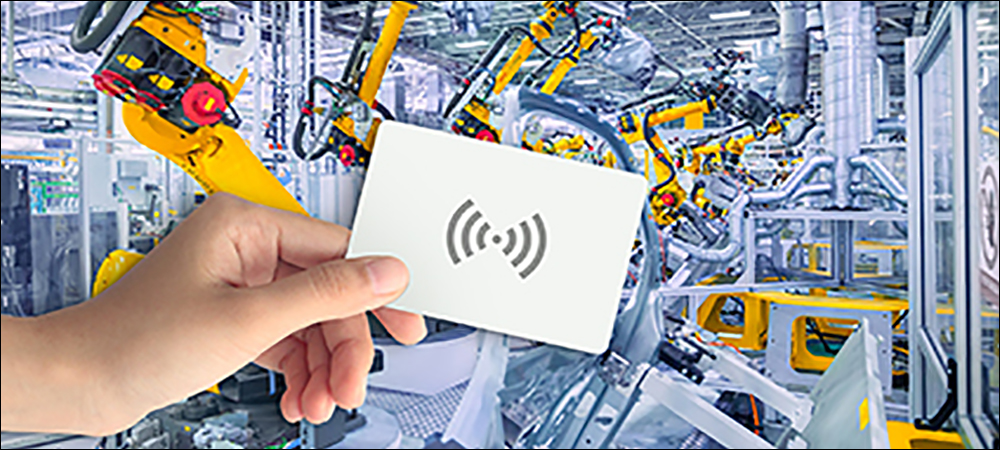Presented here are recent news announcements regarding the following organizations: the Science Based Targets Initiative, Avery Dennison, Tageos, All4Labels, CISC Semiconductor, Wiliot, the NFC Forum, New Zealand’s Dept. of Conservation, Swarm, XO2Tech, Kerlink and ELATEC.
Science Based Targets Initiative Approves Avery Dennison Emission-Reduction Plan
Avery Dennison has announced that its emissions-reduction targets have been approved by the Science Based Targets Initiative (SBTi) as consistent with levels required to meet the goals of the Paris Agreement. The targets covering greenhouse gas emissions from the company’s operations (scopes 1 and 2) are in line with reductions required to keep warming to no more than 1.5 degrees Celsius, which climate science indicates is needed to prevent the most damaging effects of climate change. The company says its target for the emissions from its value chain (scope 3) meets the SBTi’s criteria for value chain goals.
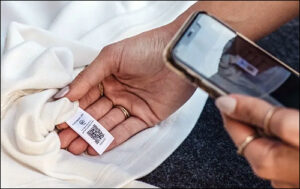 Earlier this year, the company furthered its sustainability efforts by setting targets for 2030. It committed to reducing absolute scope 1 and 2 GHG emissions by 70 percent from a 2015 baseline year, and to decreasing absolute scope 3 GHG emissions from purchased goods and services and end-of-life treatment of sold products 30 percent by 2030 from a 2018 base year. The 2030 targets fall under three broad sustainability goals, Avery Dennison reports: delivering innovations that advance the circular economy, reducing the environmental impact in its operations and supply chain, and making a positive social impact by improving the livelihoods of people and communities.
Earlier this year, the company furthered its sustainability efforts by setting targets for 2030. It committed to reducing absolute scope 1 and 2 GHG emissions by 70 percent from a 2015 baseline year, and to decreasing absolute scope 3 GHG emissions from purchased goods and services and end-of-life treatment of sold products 30 percent by 2030 from a 2018 base year. The 2030 targets fall under three broad sustainability goals, Avery Dennison reports: delivering innovations that advance the circular economy, reducing the environmental impact in its operations and supply chain, and making a positive social impact by improving the livelihoods of people and communities.
The company’s goal is to achieve net-zero emissions by 2050. The transition to a zero-carbon economy is underway and accelerating globally, the company explains, and the latest science has made it clear that more needs to be done to avoid the worst impacts of climate change and secure a thriving, sustainable economy. The next few years are critical, Avery Dennison reports, if businesses are to achieve transformation at the required pace and scale. The 2030 goals also include targets for gender diversity, employee engagement and inclusion, safety and more.
“Setting sustainability goals needs a benchmark by which we all ensure everyone is working together toward a collective goal,” said Michael Colarossi, Avery Dennison’s VP of product line management, innovation and sustainability for RBIS, in a prepared statement. “This acknowledgment by the SBTi gives us confidence that we are setting ambitious scopes 1, 2 and 3 GHG emissions reduction targets, as we join with other global industry leaders to move the needle towards a future of net-zero emissions.”
Tageos, All4Labels Collaborate on Sustainable RFID Inlays
Tageos, a provider of RFID inlays and tags, and All4Labels, which offers sustainable and digital packaging solutions, have announced a cooperation regarding sustainable RFID inlays and tags. With the goal of fostering sustainable RFID products across all industries, Tageos will offer its Zero Max RFID inlays, powered by All4Labels’ eRFID antennas, to the market. The Zero Max will be added to the company’s Zero portfolio of sustainable inlays. The underlying 4E technology was developed by Walki Group and supported by 4E Antenna AB.
According to the companies, paper-based RFID inlays manufactured using antennas made by precision laser-cutting 4E technology are sustainable, plastic-free, heavy-metal-free and conflict-material-free. They are highly efficient, the partners report, and offer up to 70 percent less waste and up to 90 percent smaller carbon footprint compared to PET material use, while a pure aluminum layer on the paper substrate improves RF performance compared to printed antenna technology.
The use of precision laser cutting in combination with a paper substrate eliminates the need for chemical antenna etching and the use of PET substrate from the manufacturing process, according to the companies. The first result of the collaboration is the Zero Max version of Tageos’s EOS-300 U9 compact inlay for retail applications and logistics packaging. The inlay has passed ARC specifications F, G, I, K, L, M, N, Q, W1, W2, W3, W4, W5 and W6 and is now available in bulk quantities. Additional Zero Max powered by eRFID inlays are on the verge of market launch.
“By cooperating with All4Labels and securing a significant portion of their impressive production capacity for precision-laser-cut paper-based antennas, we will be able to expand our highly sustainable Zero product portfolio with Zero Max powered by eRFID,” said Nicolas Jacquemin, Tageos’s VP of sales, in a prepared statement. “Tageos’s antenna design and inlay manufacturing process, All4Labels’ manufacturing power and dedication to quality, and 4E Antenna’s superior technology is the perfect combination to enable a true market breakthrough in sustainable RFID inlays and to offer best-in-class products to our customers.”
“Sustainability and providing smart solutions is the core of our business. Innovations like eRFID antenna as well as our new IoT solutions do not originate from the ivory towers of companies but from a clear focus on our customer´s demand,” added Nicolas Guenther, All4Labels’ managing director, in the prepared statement. “Our focus is to continuously ensure innovation together with customers and partners by providing new, sustainable and smart product solutions. Therefore, we are very pleased to be able to supply sustainable products to Tageos, one of the leading manufacturers of RFID inlays that has a market reputation for high quality, sustainability and innovation. We look forward to our joint success.”
CISC Semiconductor Offers RFID Reader for Quality Verification
CISC Semiconductor, a company that designs and tests wireless communication systems, has launched its portable RAIN Xplorer Reader Checker, which enables onsite performance checks of RFID readers to ensure system reliability. The testing tool is designed to fit in an engineer’s pocket, CISC reports, and is particularly suitable for hospital, logistics and retail environments.
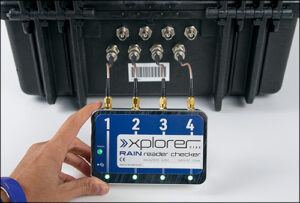 Users can connect up to four reader ports with the provided RF cables to check, on a pass-fail LED result indicator, whether the reader’s transmit power and sensitivity fulfill the defined specification. Additional features, such as a Microsoft Windows-based UI, allow root-cause analysis of failing devices, as well as the setting of test requirements for quality control and field use. The device supports the RAIN RFID Air Interface, ISO/IEC 18000-63 and GS1 EPC Gen 2 standards for interoperability.
Users can connect up to four reader ports with the provided RF cables to check, on a pass-fail LED result indicator, whether the reader’s transmit power and sensitivity fulfill the defined specification. Additional features, such as a Microsoft Windows-based UI, allow root-cause analysis of failing devices, as well as the setting of test requirements for quality control and field use. The device supports the RAIN RFID Air Interface, ISO/IEC 18000-63 and GS1 EPC Gen 2 standards for interoperability.
Sports-timing company Race Result helped to develop and test the device. “Our area of application pushes RFID technology to its limits. A reader that works absolutely flawlessly is essential for us,” said Nikias Klohr, Race Result’s CTO, in a prepared statement. “With the RAIN Xplorer Reader Checker, we can quickly and easily check whether the readers in our decoders are OK—especially because the device is so small and handy, we can test dozens of rental devices in our warehouse in a short time.”
“Developing such a test pocket tool together with a leading RAIN RFID solution provider as Race Result was a key driver for the Reader Checker,” added Josef Preishuber-Pflügl, CISC Semiconductor’s CTO and business manager for RFID and NFC, in the prepared statement. “Offering a simple test solution to all the engineers in the field, lab or production is important for us to support the trust and overall acceptance of RFID solutions.”
Wiliot Intros New Internet of Things Platform
Internet of Things (IoT) technology company Wiliot has announced its Sensing as a Service platform for the European market. Having completed a $200 million series C round of funding and expanded its executive leadership team to meet increasing demand for its platform and technology, Wiliot says it now intends to work with companies focused on making global manufacturing and supply chains more sustainable.
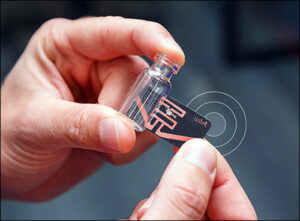 “Wiliot is proud to bring its Sensing as a Service platform to the European market, where a commitment to greater sustainability permeates nearly all segments of its economy,” said Tony Small, Wiliot’s chief business officer, in a prepared statement. “With the intelligence that Wiliot’s IoT technology brings to supply chains, companies can create a circular economy, reduce waste and operate more efficiently. As we grow our team in Europe, we look forward to working with European business leaders to help define and capitalize on a new IoT, namely the Intelligence of Everyday Things.”
“Wiliot is proud to bring its Sensing as a Service platform to the European market, where a commitment to greater sustainability permeates nearly all segments of its economy,” said Tony Small, Wiliot’s chief business officer, in a prepared statement. “With the intelligence that Wiliot’s IoT technology brings to supply chains, companies can create a circular economy, reduce waste and operate more efficiently. As we grow our team in Europe, we look forward to working with European business leaders to help define and capitalize on a new IoT, namely the Intelligence of Everyday Things.”
The Sensing as a Service platform includes Wiliot IoT Pixels—stamp-sized, self-powered computers that can be affixed to products or packaging and detect myriad conditions, including location, temperature, humidity and motion. In real time, the company explains, IoT Pixels securely communicate information to the Wiliot Cloud, where it can be access and analyzed by brands, manufacturers, distributors and retailers.
Wiliot has recently worked with Tadbik, a provider of complex materials conversion in the smart labels sector. The two partners have collaborated to mass-produce Wiliot IoT Pixel tags. Wiliot conducted more than four years of research and development in conjunction with pharmaceutical, consumer packaged goods, retail and logistics companies to create the platform. “At the heart of the Wiliot platform are its IoT Pixels,” added David Beit-On, Tadbik’s head of sales for Europe and Asia, in the prepared statement. “We are proud that those were developed with the assistance of Tadbik tag experts. The result is a product that can realize the original promise of the IoT and help us make the planet a better place.”
“When companies can monitor the status of goods using Wiliot’s Sensing as a Service platform, the benefits to be realized are innumerable,” Small explained. “They can more accurately match supply and demand, so they don’t overproduce; more efficiently deliver goods where they need to go and reduce emissions; and gain greater visibility into inventory to improve business performance and offer superior service.”
NFC Forum Releases Wireless Charging Specification
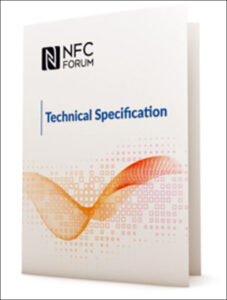 The NFC Forum, a global standards and advocacy association for Near Field Communication (NFC) technology, has announced that its Board of Directors has approved and adopted the Wireless Charging Specification (WLC) 2.0. The new space is intended to make it easier and more convenient to charge low-power devices, such as wireless earbuds, smart watches, digital stylus pens, headsets, fitness trackers and other consumer products, using smartphones and other NFC-enabled devices at a power transfer rate of up to 1 watt.
The NFC Forum, a global standards and advocacy association for Near Field Communication (NFC) technology, has announced that its Board of Directors has approved and adopted the Wireless Charging Specification (WLC) 2.0. The new space is intended to make it easier and more convenient to charge low-power devices, such as wireless earbuds, smart watches, digital stylus pens, headsets, fitness trackers and other consumer products, using smartphones and other NFC-enabled devices at a power transfer rate of up to 1 watt.
This, according to the NFC Forum, allows for wireless charging by enabling a single antenna in an NFC-enabled device to manage both communications and charging. WLC 2.0 supports smaller antenna sizes, expanding the range of small, battery-powered consumer and IoT devices that can be wirelessly charged using smartphones and other NFC-enabled devices. This is transformative for device manufacturers and solution providers, the organization explains, as it allows for the design of smaller, lighter and more affordable wireless products. The NFC Forum estimates that the majority of mobile phones will be interoperable with the antennas covered in WLC 2.0.
“Over 60 million wireless earbuds were sold Q1 2021 worldwide,” said Mike McCamon, the NFC Forum’s executive director, in a prepared statement. “These and many other consumer products operate on rechargeable batteries and the NFC Forum’s Wireless Charging Technical Specification 2.0 is an easy, convenient method to keep everything charged. This specification will also further improve the user experience for the two billion consumers and businesses using smartphones and other connected products. It is part of a global trend toward the creation and proliferation of smaller, rechargeable devices and will allow the majority of smartphones and other NFC-enabled devices to communicate with and charge these products.”
New Zealand Dept. of Conservation Deploys Swarm Satellites
New Zealand’s Department of Conservation (DOC) is using Swarm‘s satellite data services to monitor critical communications equipment in remote areas. The DOC is responsible for the oversight and upkeep of more than 30 percent of the country’s land, including preserving biodiversity and supporting search-and-rescue efforts in New Zealand’s remote regions. These efforts frequently involve stranded tourists using the more than 950 huts located in the middle of the wilderness.
To help its team communicate in these areas, the DOC uses more than 120 radio repeater sites, which transmit handheld radio communications signals over the tops of mountains that would otherwise block them. These radio repeater sites need to be closely monitored for damage or low-power warnings, so that repairs can be made before a site fails. Many of the sites are only accessible by helicopter, and arranging access is both expensive and dangerous in poor weather conditions. As a result, some of the radio sites may remain out of service for weeks at a time.
In an effort to alleviate this problem, DOC is working with Motiv, a New Zealand-based company that remotely tracks key data points at radio sites, including battery power voltage, peak loads and the health of the solar panels that power radio repeaters. Swarm provides essential data connectivity for extracting the information from the radio equipment.
XO2Tech Unveils New Products for Consumer Packaged Goods
XO2Tech has announced several new products for the consumer packaged goods (CPG) sector. Its CPG-Food Data Hub is an artificial intelligence (AI)-based food device platform designed to provide CPG food management, sustainability and safety for home, retail and hospitality. The hub is configured to read RF tags (RFID or Bluetooth) and QR codes attached to CPG containers or food items.
This, according to the company, enables users to automatically manage inventories; report or determine food expiration dates, levels of food freshness or spoilage, and anticipated shelf-life using codes and gas-material sensing technologies; detect diluted or fraudulent food items; purchase or replace used or absent products; track and monitor usage; recommend or suggest product recipes and products to meet daily nutritional requirements; and provide product traceability, nutritional, allergen, GMO and recall data.
“Simply unpack, place, plug and play the CPG-Food Data Hub in your kitchen,” said Edward Espinosa, the company’s founder, in a prepared statement. “The Hub automatically tracks and monitors CPG food item condition and usage in the refrigerator, freezer, pantry and kitchen cabinets. Place items close to the Hub to read QR codes. CPG food data is easily read with an oversized display and can be readily used by children and seniors. Generated shopping lists are easy to edit, readable with your smartphone or fulfilled online.” The Hub is portable and can be carried or used anywhere, he explained, and it can be integrated with any appliance.
XO2Tech has also unveiled its Refrigerated + UV light + CPG Data Hub microwave/oven. According to the company, the unit provides convenience, product data and safety by allowing users to refrigerate items with the option of activating the system via smartphone to cook or warm the food whether they’re at home, in transit or at a designated or AI-determined time. The microwave/oven can include an ultraviolet light function to disinfect home or personal items, containers or food. It incorporates a CPG-Food Data Hub with an oversized display designed to read RFID or Bluetooth tags or QR codes to automatically set refrigeration and cooking temperatures.
Finally, the company’s Health Hub is an AI-based platform designed to provide vital sign and food monitoring and management, as well as sustainability and safety for home, retail and hospitality. The platform can read RFID or Bluetooth tags attached to or within close proximity to users to monitor their vital signs, and it can perform many of the same functions as the CPG-Food Data Hub. The plug-and-play device can provide voice or text push notifications and alerts ranging from medication adherence and vital signs to appointments, and vital signs and food data can be read using an oversized display.
Kerlink Launches Indoor LoRaWAN IoT Gateway
Kerlink, a provider of IoT solutions, has announced its new LoRaWAN indoor gateway designed to help smart cities, factories, warehouses, and building owners and operators support the booming number of connected sensors and devices of massive IoT. The company’s Wirnet iZeptoCell gateway is designed to support low-power wide-area network (LPWAN) and long-range wide-area network (LoRaWAN) technologies.
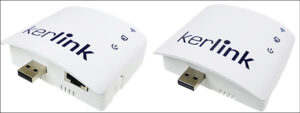 According to Kerlink, LPWAN and LoRaWAN solutions are well-suited to handle the large number of individual endpoints (sensors or devices) connected to IoT networks, the increasing challenges for network coverage of remote and widely dispersed endpoints or deep inside building installations in basements and underground, and the soaring amounts of small data packages sent to the edge and to the cloud from the endpoints, requiring low latency and small bandwidth.
According to Kerlink, LPWAN and LoRaWAN solutions are well-suited to handle the large number of individual endpoints (sensors or devices) connected to IoT networks, the increasing challenges for network coverage of remote and widely dispersed endpoints or deep inside building installations in basements and underground, and the soaring amounts of small data packages sent to the edge and to the cloud from the endpoints, requiring low latency and small bandwidth.
“This new member of Kerlink’s Wirnet iSeries is not only the newest Kerlink product, it embodies a brand-new fully operational design combining hardware, software and value-added services that are critical for massive IoT and improved end-user experience,” said Jean-Philippe Balberde, Kerlink’s innovative products and solutions marketing manager, in a prepared statement.
The gateway allows network operators and owners to overcome three challenges common to the deployment of customized and private indoor LoRaWAN networks designed for massive IoT, the company reports—namely, simple and quick installation in varied environments, due to its compatibility with different sources of power, such as multi-blade AC-DC power supply, USB and power-over-ethernet (PoE) splitters; flexible optimized backhaul versions with Ethernet or native LTE-M links, priced to accommodate different network configurations and budgets; and strictly plug-and-play, since zero-touch provisioning eliminates the need for users to possess technical expertise.
The system is available in two versions that differ only in their backhaul options, Kerlink notes. “Wirnet iZeptoCell is the perfect alliance between an innovative new hardware using the latest technologies, such as Sx1302, internal antennas and native cellular backhaul, and Kerlink’s well-known, powerful software synonym for operational excellence, currently installed on more than 70,000 gateways around the world,” Balberde added. “The result is a timely, market-responsive gateway that addresses the demands of massive IoT, and which embodies Kerlink’s industrial-grade technical expertise with both superb radio performance and impressive product reliability.”
ELATEC Issues White Paper on User Authentication and Access Control
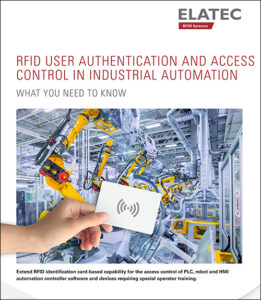 Authenticating and authorizing the personnel who operate, update and maintain manufacturing systems in industrial automation applications is typically accomplished using magnetic stripe cards, smart cards, RFID cards, PIN pads and/or key switches. User authentication and authorization solutions for accessing industrial automation equipment in factories must be easy to use, flexible, durable and secure, and they must stand up well to environmental elements.
Authenticating and authorizing the personnel who operate, update and maintain manufacturing systems in industrial automation applications is typically accomplished using magnetic stripe cards, smart cards, RFID cards, PIN pads and/or key switches. User authentication and authorization solutions for accessing industrial automation equipment in factories must be easy to use, flexible, durable and secure, and they must stand up well to environmental elements.
ELATEC‘s white paper “RFID User Authentication and Access Control in Industrial Automation: What You Need to Know” explains why RFID card systems can address these application requirements better than other methods, as well as why they are the most widely used form of identity authentication and access control. One of the essential benefits of RFID identity authentication and access control, the company explains, is that it is easy and convenient to use. RFID cards are touchless, and a user only needs to wave a card within a few inches of a reader for it to be interrogated.
According to ELATEC, RFID readers can be used throughout an organizational ecosystem for multipurpose authentication with existing employee building-entry ID cards, adding functionality like time-based access control, access to manufacturing processes and hazardous areas. Additionally, RFID readers can often read from and write to more than one type of card. The white paper explains the benefits of using RFID card systems, how RFID authentication and access control works in industrial automation applications, application considerations for RFID system selection, and more.

